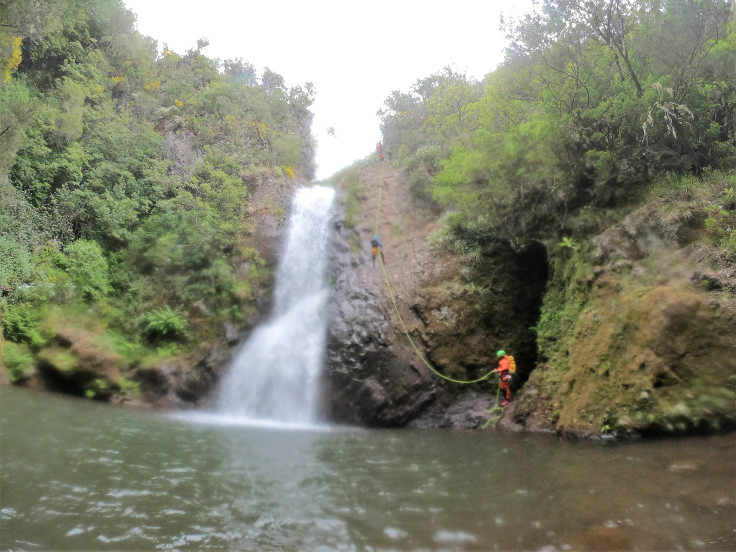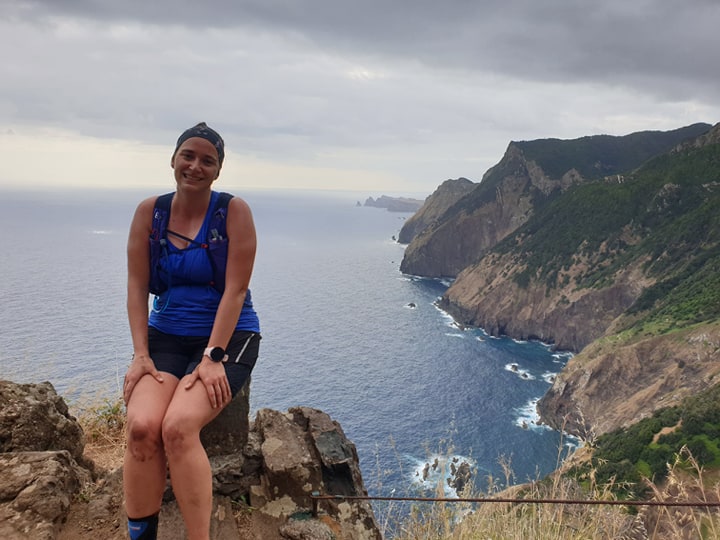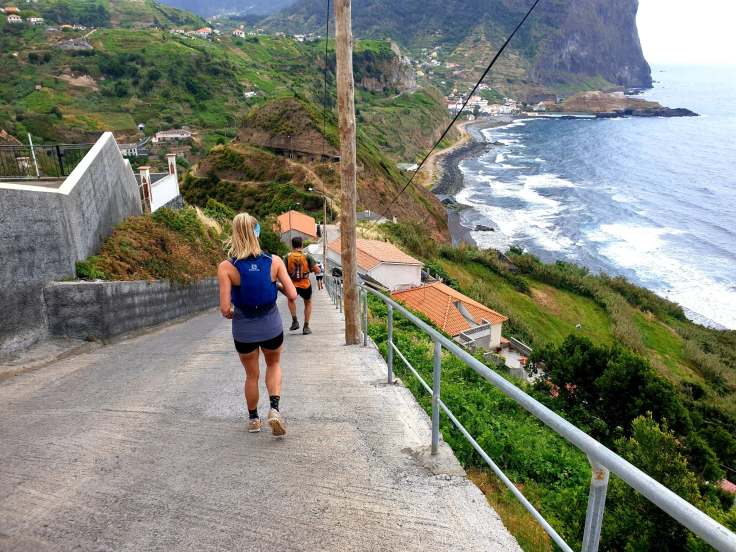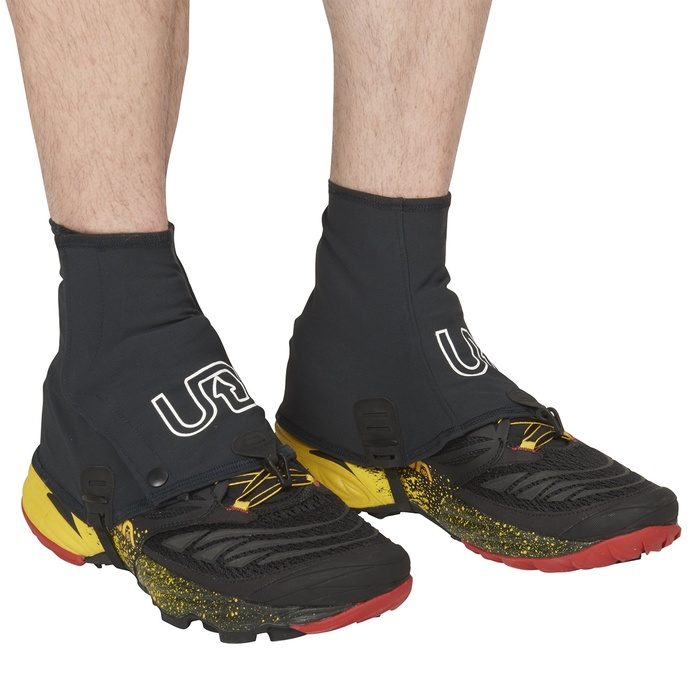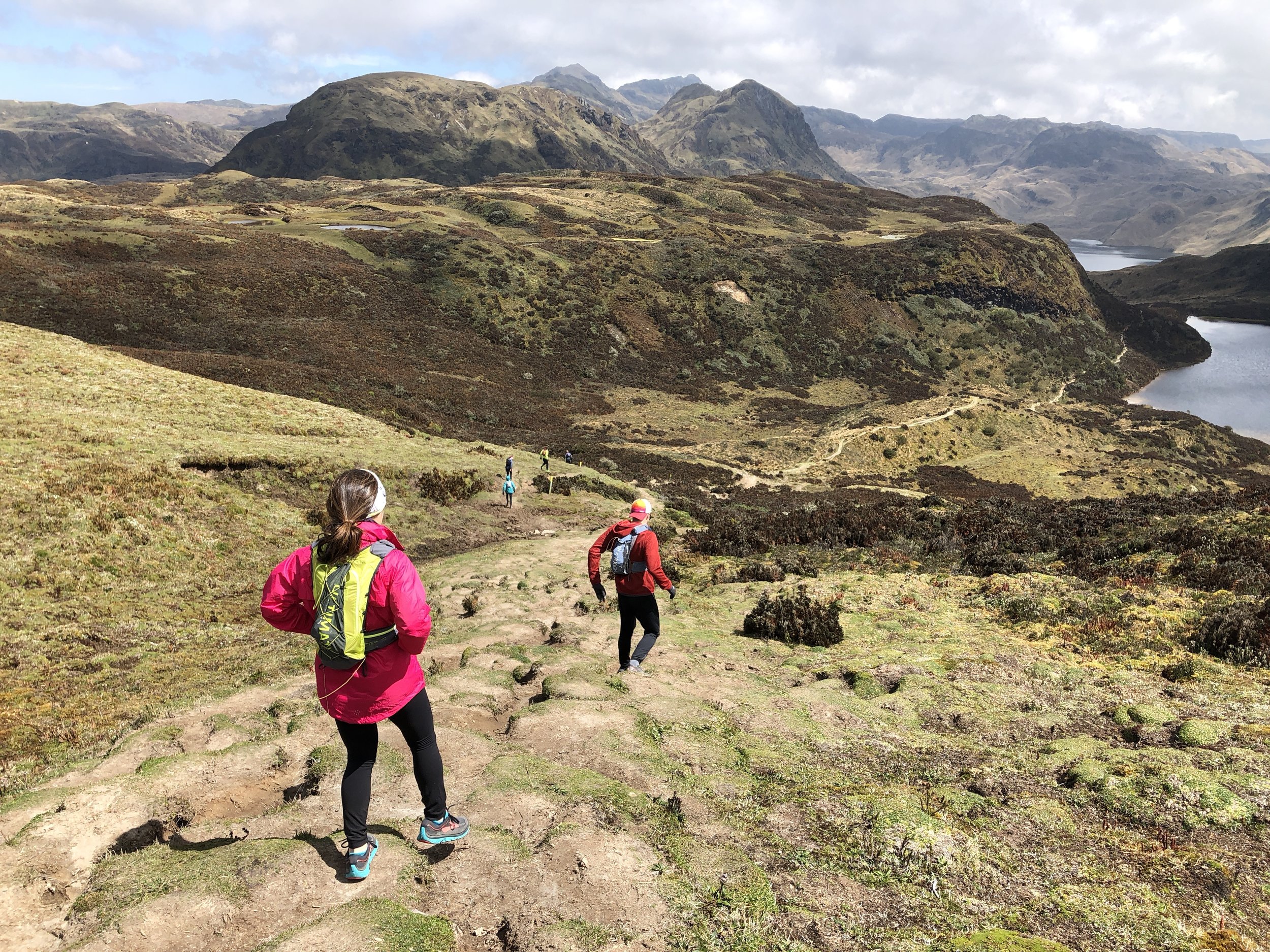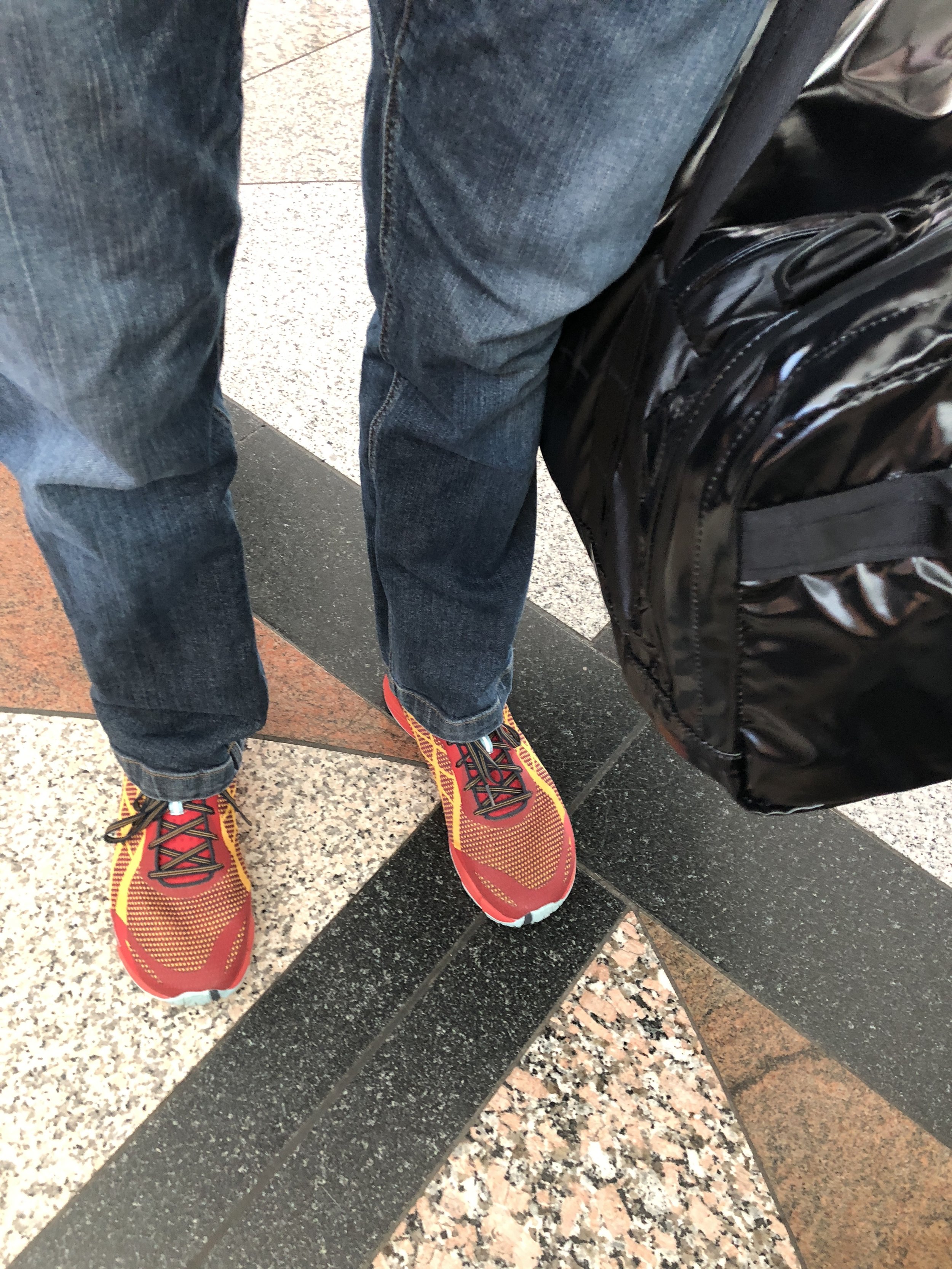Madeira Skyrunning Adventures
/By Katinka Nyberg
In the beginning of June I went on this fantastic trip together with Trailrun Adventures & Retreats founded by Anna Frost and Ron Braselton.
As a mountain lover, new-born Skyrunner, sports freak and outdoor lover. This was a trip in my taste. In only one week I’ve been doing all these things as I have just dreamed of before.
I’ve been running my first Skyrace, I’ve been mountaineering in the beautiful mountains of Madeira, I’ve been running along the beautiful coastline, canyoning in the rivers and surfing in the waves.
Madeira is amazing and the variety of this Island is endless. Check out my experiences from the week…
Friday – Arriving to Santana
I arrived to Santana one day before the Santana Skyrace and Braz picked me up at the airport. I was full of expectations and also a little bit nervous if I was going to make it. This was my first real Skyrace, and also my first trailrunning trip in the mountains running that much in one week.
And as the owners of the travel agency are Anna Frost (Frosty) and Ron Brazelton (Braz), I was also a little bit nervous about that I wasn’t going to be a good enough runner. But Braz was very nice and calmed me down on that part. He said that this is a trip just for pleasure, and we are not going to go that fast. You will be ok!
I know that I had been training a lot this year, but would that be enough. Going to the gym, running in the wood, running laps in an 86 m high slalom slope is not really the same thing as the mountains of Madeira.
Enough of worry and more action 🙂 It turned out later that week that I would be totally fine, being able to participate and enjoy every activity and every each moment of the trip…
Avrivning to Quinta Do Furao
When we arrived to Quinta Do Furao, Santana, I was absolutely amazed by the beautiful place and gorgeous scenery. This was a place where you could really relax and enjoy.
Hotel Quinta Do Furao, Santana, Madeira
Saturday – Santana Skyrace
This was the day that I had been waiting for and training for all year. Santana Skyrace 23k, 1670 D+, arranged by Ultra Skyrunning Madeira.
I run the race as planned and it was a great race experience. It was very hot, very hard and very technical. If you like to read more about the race and review my race report check out Santana Skyrace 2019 race experience >>.
Katinka Nyberg Santana Skyrace.
Sunday – The group arrives
The rest of the group arrives at the hotel and we start to get to know each other on a cup of coffee watching the beautiful scenery. It’s was a small group of very nice people that all of us loves everything about running, so that was a great start.
The hotel view – Hotel Quinta Do Furao, Santana, Madeira
Monday – Skyrunning Pico Ruivo
The week kicks of with a run of about 5 hours on the top of the Island and we run some of the parts from Madeira Skyrace 55k. Starting at Teixeira, running up high above the clouds to Pico Ruivo and then following the unique pathway of steps and single trail connecting to Pico Areeiro.
Our guides Braz and Gonçalo has been very good taking us around to all those fantastic places, and I have to say that this is the most beautiful run that I have ever experienced so check out the video below.
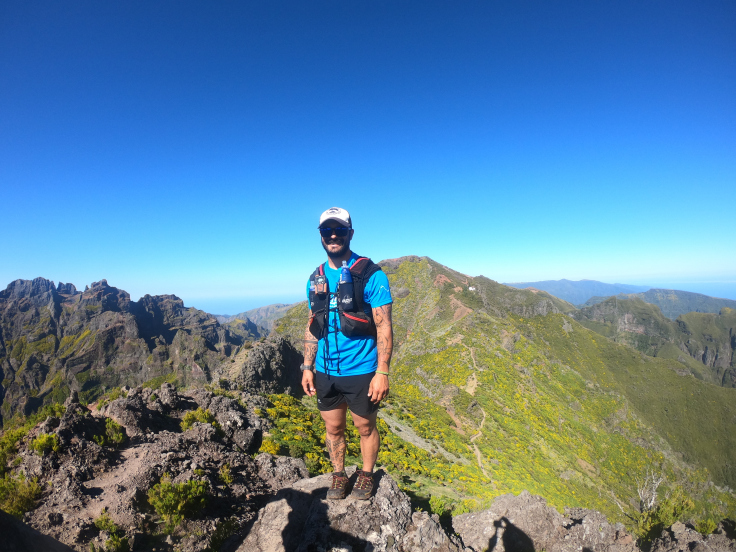

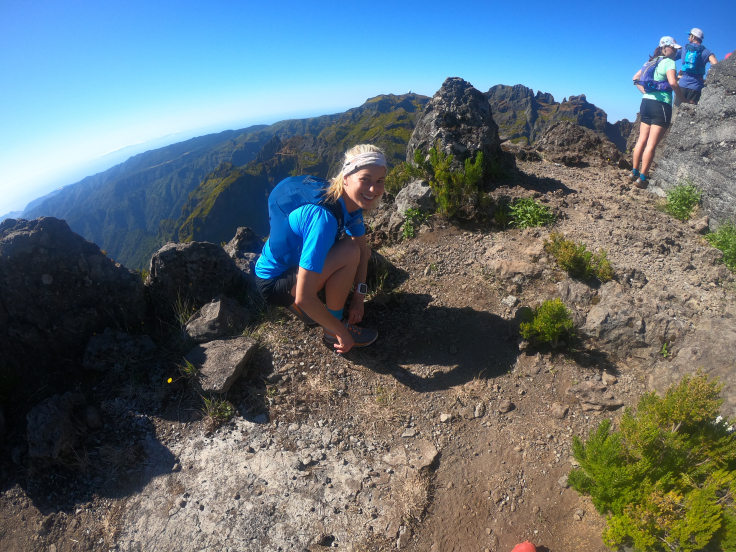
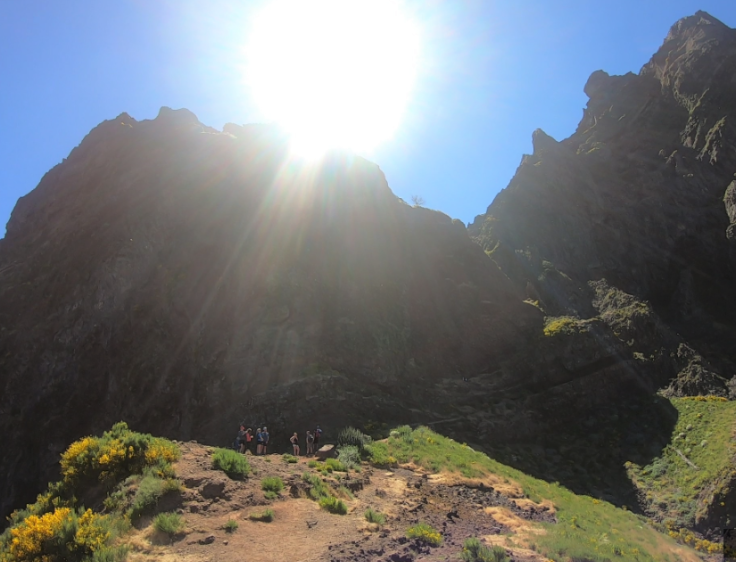

Tuesday – Canyoning
This was something totally new to me. Canyoning in the river, climbing down in ropes and doing a jump of 12 meters. It was a great experience and everyone in the group loved it!
Too bad that they might have to shut it down next year because of Levada.
Wednesday – Trailrunning the Coastline & Surf
We started the day with a run of about 2.5 hours from the coastal village of Portela over the incredible ridges and back along a high coastal path to Porto da Cruz. After that we just jumped into the ocean and I tried surfing for the first time in my life. It was great and I made it! 🙂
We rounded up the day with a very nice lunch at a fish restaurant in the village of Portela.
This was my favourite day!
Finally I (Katinka) made it!!
Thursday – Stunning Running & Boat trip
This day started with an easy run of about 1.5 hours at the stunning and diverse Ponta de St Lourenco Peninsula. After the run we went on a relaxing boat trip sunbathing and watching the dolphins.
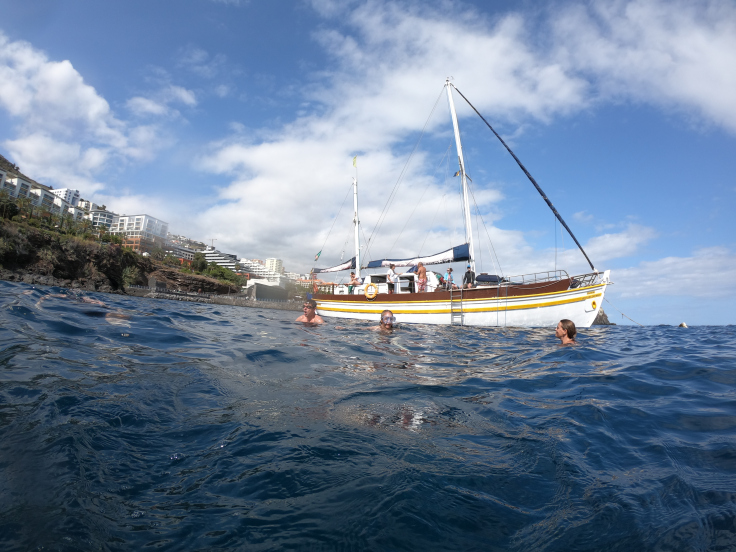
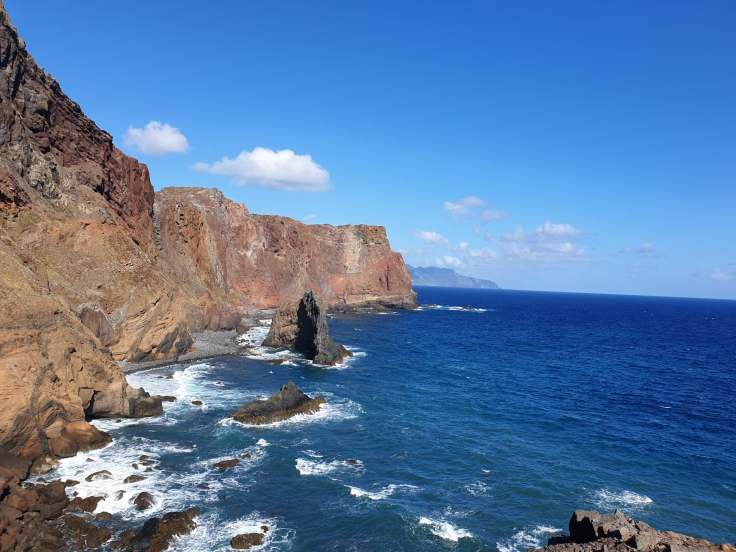
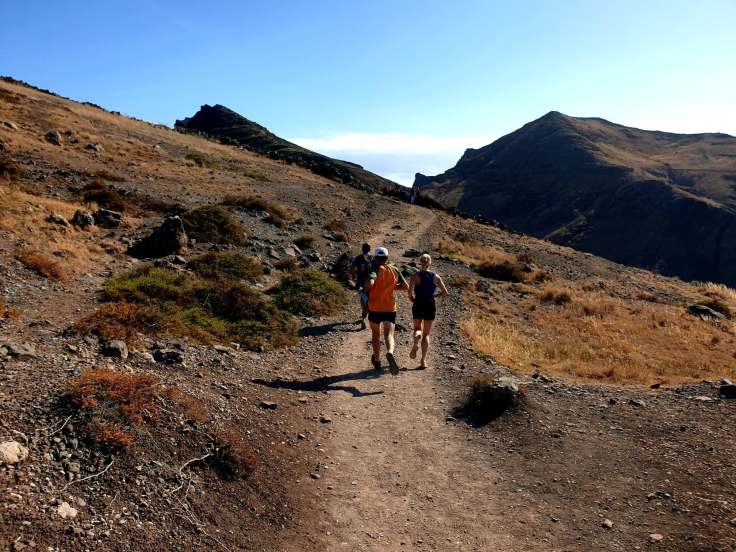
Friday – Running the Levadas
This was the longest and toughest run of the week, and to my big surprise it was also the groups favourite day. The run was about 5 hours and we were running from from Ilah along the ancient and incredible Levadas engineering all the way to Cruzinhas. The day started off with ice cold rain and we were all freezing. We kept going, and finally when we got to the absolutely gorgeous waterfalls, it was all worth it.
We were rounding up the day with about 500 meters passing through the same river as in the Madeira Skyrace 55k, which was great.
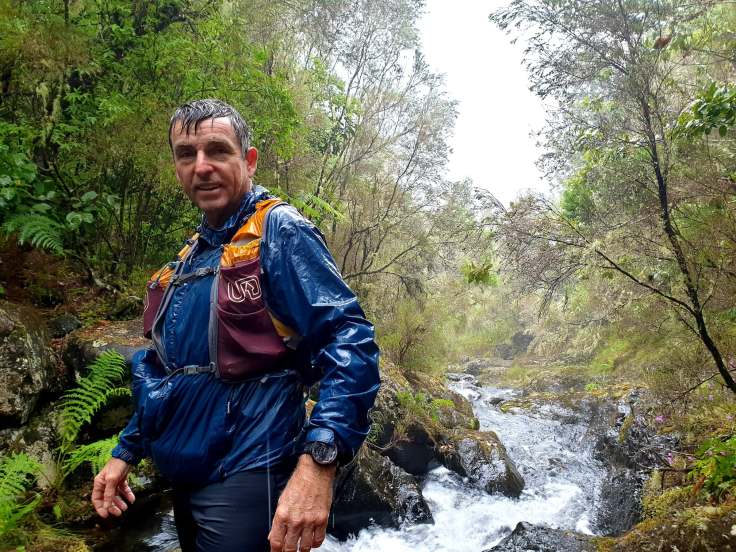
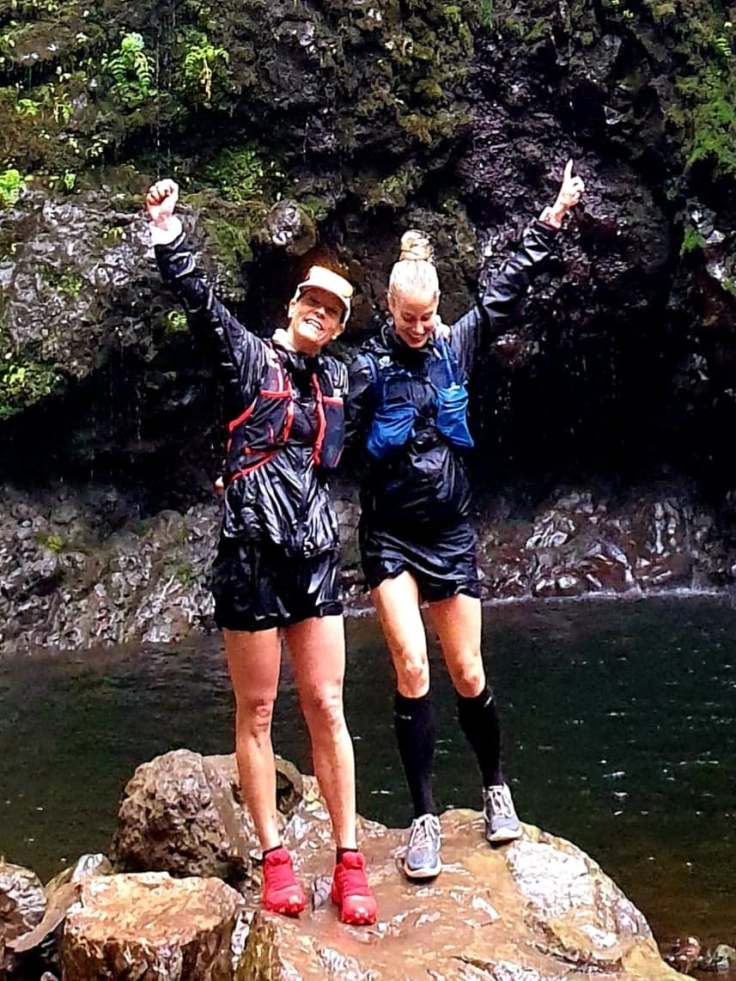
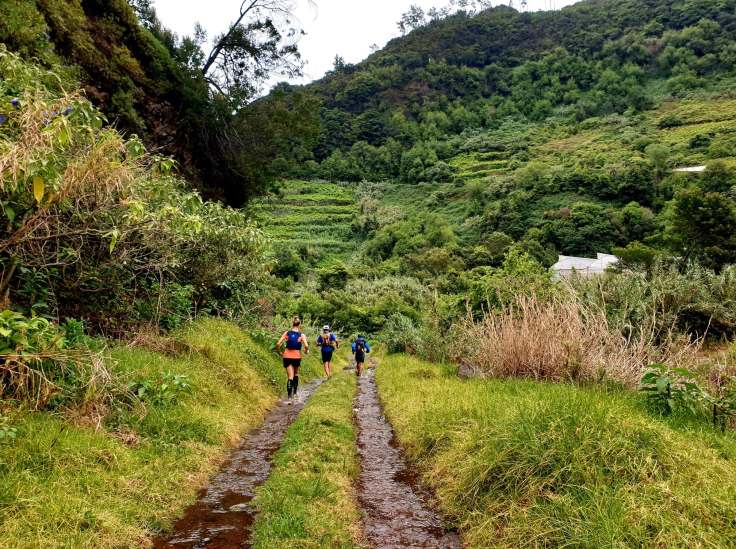

Celebrating a great week!
This was a great week and a great group! Everyone agree that the whole trip was amazing and a memory for lifetime. All the activities were so well and carefully picked by Braz and Anna, and I think that we all understand that this type of trip takes years of experiences and knowledge to arrange.
Last night with the group we rounded up the week by talking about our experiences and everyone was to pick their favourite day.
The winner day was Friday. Running along the Levada.
Last night with the group celebrating a great week full of adventures
Thank you, guys!
Thank you, guys, for making this trip special and amazing! And extra thanks to Braz and Anna that made it possible.
Happy Skyrunning!
By Katinka This article was originally published at SkyRunner.







